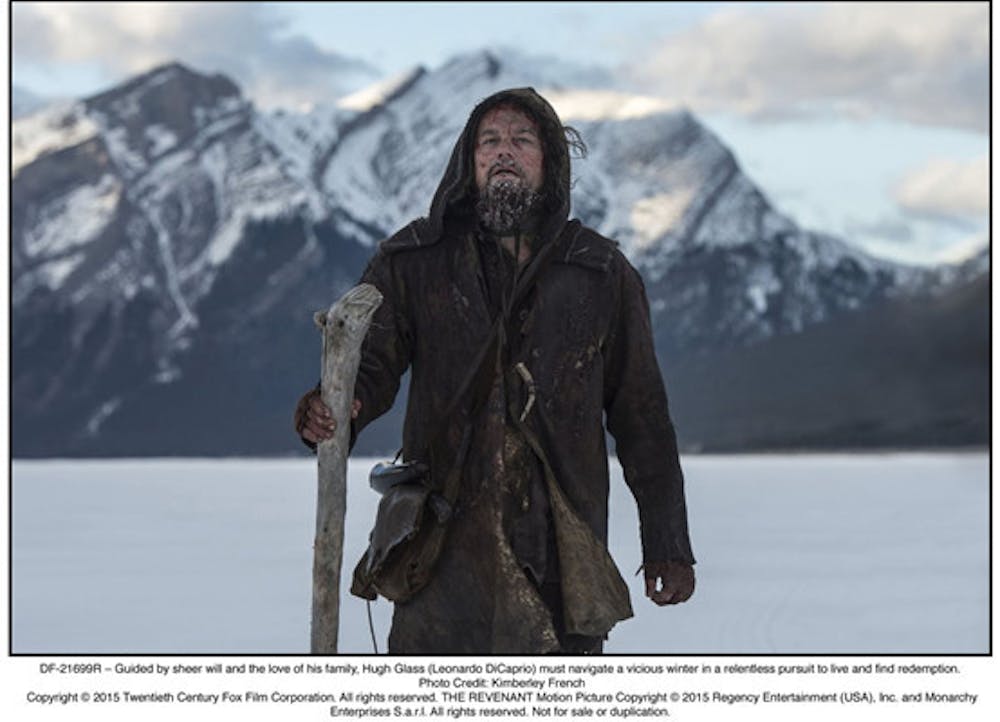“The Revenant,” Alejandro González Iñárritu’s recounting of the real-life adventures (or, rather, misadventures) of Hugh Glass, has received critical acclaim after being released Jan. 8. Among its devout supporters are movie buffs and casual moviegoers.
The film depicts the harrowing tale of Hugh Glass, a fur trapper and frontiersman played by none other than Leonardo Dicaprio. After he is mauled by a bear and left to die without so much as the hope of kindling a fire, Glass must make a nearly 200 mile journey to the refuge of Fort Kiowa.
“The Revenant” is a classic example of the revenge-driven film genre but with a twist. These films almost invariably depict some tangible benefit to exacting revenge. Glass certainly gets his revenge, but he is deprived of any real satisfaction from it. “The Revenant,” then, offers the viewer a unique account of revenge and what worth it may hold, at least through Glass’ eyes. For Glass, retribution is an endless source of motivation, but it fails to either yield some meaning or allow Glass to reflect upon potential consequences.
Though the narrative is driven by revenge, it does not take into account how this revenge plays out beyond the physical realm. After meeting a Pawnee Indian and being offered a buffalo liver, Glass is told that revenge is not for man but is to be left to God. Iñárritu leaves the viewer utterly speechless as this piece of advice manifests throughout the remainder of the film.
Glass’ quest is accompanied by a seemingly incessant series of incredible feats. Iñárritu is bent on embellishing Glass’ true story, and through these hyperbolic additions, the viewer is taken on a rollercoaster of heart-stopping action.
Glass’ true story includes the notorious bear attack as well as his arduous journey to Fort Kiowa. But, included in Iñárritu’s narrative is an embattled Glass being attacked by Arikara Indians, floating down a torrential ice floe and even vaulting over a mountain on horseback to escape an Arikara raid. Iñárritu uses these scenes to keep up the film’s inertia, and the viewer is often wholly enthralled — only realizing that the movie has come to its fateful climax as the credits roll.
“The Revenant” provides a stunning tale of revenge




